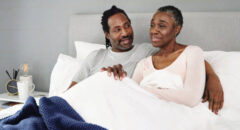
Heart Disease is the leading cause of death for men and women in most ethnic groups and according to the CDC someone has a heart attack every 40 seconds in the United States. Coronary heart disease is the most common type of heart disease and research shows that 18.2 million adults age 20 and older have it.
READ: How Women’s Heart Attacks Are Different Than Men’s
So I know you are wondering, what can I do to prevent a heart attack and if I had one in the past what can I do to protect myself from it reoccurring? Can you reverse heart disease? These are the most common questions that most people ask but the key to prevention is simple; you have to be disciplined and change your lifestyle.
Think of it this way, if you are dealing with a weight issue; the pounds you gained did not appear suddenly overnight. It took days, weeks, months, and years for you to compile that unhealthy weight onto your body and it’s going to take time, discipline and patience for you to get it off. The same method applies to your heart when it comes to heart disease and reversing the effects of your former lifestyle.
Just remember “ Don’t ignore the signs; if you have a heart, you can have an attack” and no one is exempt from the unfortunate pain that happens when part of the heart muscle doesn’t get enough blood supply. Your heart is a muscle and a severe spasm or sudden contraction of the coronary artery can stop your blood flow to your heart muscle.
READ: Don’t Ignore The Signs: “If You Have A Heart, You Can Have An Attack.”
Let’s discuss the symptoms of a heart attack and then talk about the risks and how you can reverse heart damage. Most heart attacks involve some level of discomfort within your chest. This pain can feel like someone squeezing or applying pressure in the center or the left side of your chest. This discomfort or pain can last for a few minutes, disappear and then return.
You could also feel shortness of breath along with chest pain and you may also break out into a cold sweat. Most people also experience back pain, neck, jaw, arms and shoulders pain accompanied with unexplained tiredness, nausea or vomiting. If you find yourself with these symptoms, immediately seek help and call 9-1-1 because every second counts and in some cases a heart attack may require CPR or a defibrillator.
READ: 911 Basics: Responding To A Heart Attack
You are more at risk of having a heart attack and heart disease if you have high blood pressure, high cholesterol, smoke, or have a family history of these risk factors. Making simple adjustments to your lifestyle can significantly reduce your chances of getting a heart attack or having heart disease. First, start with a change in your mindset and follow through with action. Start with an “I can” and “I will do this now” attitude because you will not be able to overcome your lifestyle changes if you don’t see a need to change your former habits and realize that you have the power to control them.
Tips to reverse heart disease:
1. Quit smoking.
Some people are able to do it cold turkey but if you can’t do it on your own you have options. The American Lung Association offers support programs to assist you on your journey and there are seven FDA-approved medications you can discuss with your doctor to help you quit smoking.
2. Revise your diet and eating habits.
Unhealthy eating habits accompanied with high blood pressure is something you can control. Put away the fatty, greasy meats like pork chops, ham hocks and replace them with leaner meats like fish. Instead of frying your meat in vegetable oil or shortening, bake your meat and use olive oil instead. If you love sweet stuff substitute candy and processed snack cakes for fresh fruits and nuts to curb that sweet tooth craving.
READ: Avoiding These Foods Can Help Prevent Your Next Heart Attack
3. Lose weight and exercise regularly.
Research has found that being obese is linked to bad cholesterol and this can also cause high blood pressure and diabetes. Changing your eating habits and maintaining an exercise regimen or physical activity can greatly reduce your chances of heart disease.
4. Lower your alcohol consumption.
Drinking too much alcohol can raise your blood pressure and experts suggest that men should have no more than two drinks a day and women shouldn’t have more than one drink a day.
5. Increase your vitamin D intake naturally or with medication.
Your body naturally produces vitamin D when you’re out in the sun but if you are not getting enough sun rays I suggest you consult with your doctor and consider taking supplements. Studies have shown that vitamin D helps keep abnormal cells from multiplying in the breast and colon tissues and it regulates blood pressure in the kidneys and regulates the blood sugar levels in the pancreas.
6. Cardiac rehabilitation programs.
If you have recovered from a heart attack then I say continue to make adjustments to your lifestyle and make sure you stay consistent with your supervised program. Attending a cardiac rehab gives you a team of people who would support you by educating you on living healthier, find ways to alleviate stress and guide you through a physical activity or exercise regime to keep you focused and accountable on your journey of recovery.
READ: Your Guide To: Life After A Heart Attack
Implementing a few changes within your current lifestyle can greatly reduce your chances of having a heart attack and reverse the damages caused by poor lifestyle choices over the years. Just remember the bad choices you’ve made in the past regarding your health do not have to be your future. Some things take time to adjust to but in order to move forward, you must change your mindset and take action to live healthier than you did in the past.








